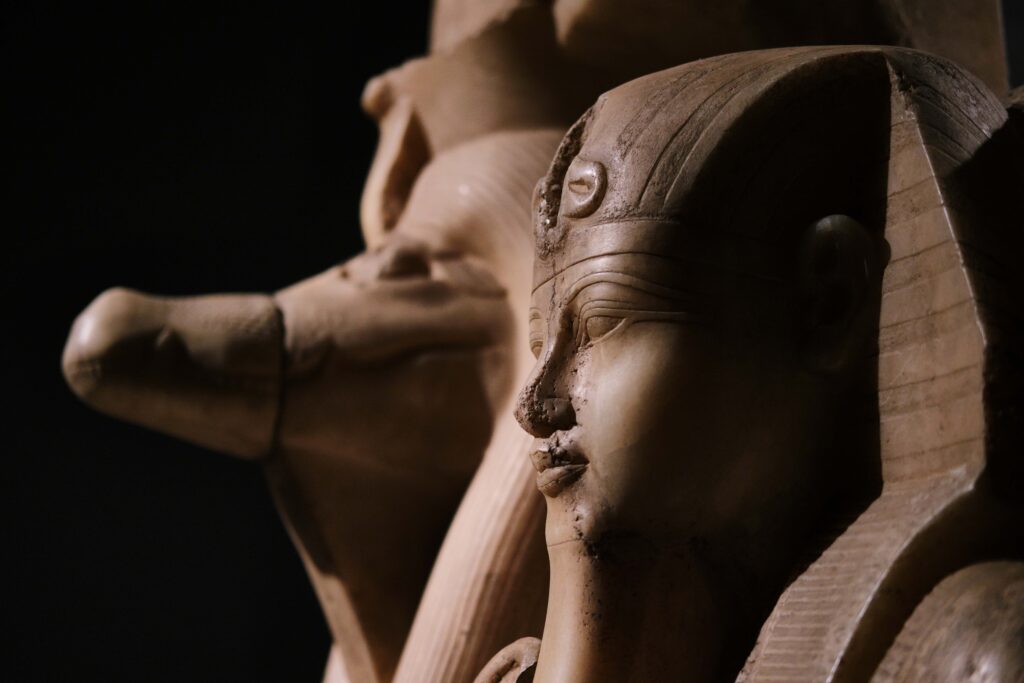A mysterious Egyptian mummy named Bashiri, discovered near Luxor in 1919, continues to puzzle archaeologists. The mummy was uncovered by British Egyptologist Howard Carter, who also discovered Tutankhamun’s tomb a few years later. Bashiri’s identity and the method of his embalming remain a mystery to this day.
Unlike other mummies from ancient Egypt, Bashiri’s wrapping method is unique. No other mummy in history shows the same technique. The fabric wrapped around his face forms a geometric pattern, resembling the design of ancient Egyptian pyramids. This unusual wrapping method suggests that Bashiri was someone of high social status. However, no one knows who he was.
A Unique Mummy
The wrappings of Bashiri are like no other found in Egypt. The fabric is arranged in a complex pattern. This design is very similar to the shape of pyramids. Experts believe that this pattern shows the mummified man was of high rank. It is clear that the person was wealthy and important. But, no one has yet been able to confirm his identity.
The idea that Bashiri was a powerful person is based on the design and materials used in his mummification. The level of detail in the wrapping and the items found with the mummy point to wealth and influence. But who he truly was remains a mystery.
Advanced Technology: CT Scans and X-rays
Instead of unwrapping Bashiri, scientists have used modern technology to study the mummy. CT scans and X-rays have allowed researchers to see inside without damaging the mummified body. These methods have provided new information about the mummy.
The scans showed that Bashiri was a man who stood about 167 centimeters tall. He was likely buried during the Ptolemaic period, around the 2nd and 3rd centuries BCE. Researchers also found decorative items with the mummy that suggest Bashiri was an important figure in ancient Egypt.
Symbolism and Wealth
Bashiri’s burial included several symbolic items. A hawk-shaped chest piece made of beads was found, which suggests the individual was wealthy. There are also symbols of ancient Egyptian gods and myths on his chest. These include Isis, Nephthys, and the four sons of Horus. These items point to the man’s high social standing.
Additionally, painted figures of Anubis were found at his feet. Anubis is the god of mummification and the afterlife. The presence of Anubis images further suggests that Bashiri held an elite position in society.
Even with all these clues, no one knows his full name. One inscription seems to say “Bashiri,” but it’s unclear. Some believe it might be “Neno,” but this too remains uncertain.
Why Not Open the Mummy?
While it would be tempting to unwrap Bashiri’s mummy to learn more, scientists have decided against it. The wrappings are very fragile. Any attempt to remove them could destroy the only known example of this mummification technique. For this reason, researchers have chosen to study Bashiri without opening the wrappings.
Instead of unwrapping, scientists have relied on non-invasive methods like CT scans to learn about the mummy. This way, they can study his remains while preserving the valuable wrapping method.
Bashiri’s Legacy
Bashiri’s mummification is a rare example of ancient Egyptian craftsmanship. The unique wrapping and the items found with the body point to a person of great status. However, his true identity remains unknown.
The mystery of Bashiri continues to captivate archaeologists. Researchers hope that future studies will reveal more about his life. But for now, he remains a puzzle, carefully preserved in linen and time.
Bashiri is a reminder of the rich history and cultural significance of ancient Egypt. His story is still being written, as scientists work to uncover more clues about this mysterious figure. The mummy, like so many other ancient artifacts, holds secrets that time has yet to reveal.


